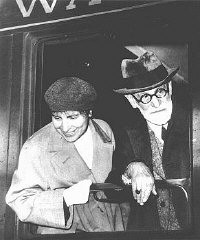You searched for: University%20of%20North%20Alabama%EF%BF%BD%EF%BF%BD%EF%BF%BD%EF%BF%BD%EF%BF%BD%EF%BF%BD%EF%BF%BD%EF%BF%BD%EF%BF%BD%EF%BF%BD%EF%BF%BD%EF%BF%BD%EF%BF%BD%EF%BF%BD%EF%BF%BD%EF%BF%BD%EF%BF%BD%EF%BF%BD%EF%BF%BD%EF%BF%BD%EF%BF%BD%EF%BF%BD%EF%BF%BD%EF%BF%BDWeChat%EF%BF%BD%EF%BF%BD%EF%BF%BDKAA2238%EF%BF%BD%EF%BF%BD%EF%BF%BDldy
<< Previous | Displaying results 51-100 of 315 for "University%20of%20North%20Alabama%EF%BF%BD%EF%BF%BD%EF%BF%BD%EF%BF%BD%EF%BF%BD%EF%BF%BD%EF%BF%BD%EF%BF%BD%EF%BF%BD%EF%BF%BD%EF%BF%BD%EF%BF%BD%EF%BF%BD%EF%BF%BD%EF%BF%BD%EF%BF%BD%EF%BF%BD%EF%BF%BD%EF%BF%BD%EF%BF%BD%EF%BF%BD%EF%BF%BD%EF%BF%BD%EF%BF%BDWeChat%EF%BF%BD%EF%BF%BD%EF%BF%BDKAA2238%EF%BF%BD%EF%BF%BD%EF%BF%BDldy" | Next >>
-
Olympic athlete John Woodruff describes his experiences of discrimination
Oral HistoryIn 1936, John Woodruff was one of 18 African Americans on the US Olympic team competing in Berlin. He won the gold medal for the men's 800-meter race. In this clip from an interview on May 15, 1996, Woodruff describes his personal experiences of racial discrimination during and after the Olympic Games of 1936.
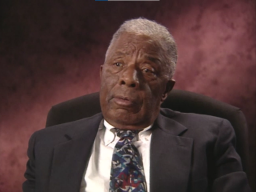
-
Immediate American Responses to the Nazi Book Burnings
ArticleThe Nazi book burnings of 1933 sparked responses from anti-Fascist organizations, Jewish groups, and writers in the United States. Learn more.

-
Jacob Wiener
ArticleExplore Jacob Wiener’s biography and learn about his experiences during Kristallnacht in Würzburg, Germany.

-
Mirjana Babunovic Dimitrijevic
ID CardMirjana was the second of three children born to well-to-do Serbian parents in the capital of Bosnia, in central Yugoslavia. Her father was a successful businessman and prominent Serbian nationalist. Like her parents, Mirjana was baptized in the Serbian Orthodox faith. Mirjana attended elementary school in the multi-ethnic city of Sarajevo. 1933-39: While in secondary school, Mirjana studied foreign languages and toured western Europe. In 1938 she graduated. That fall she enrolled as a student of English…
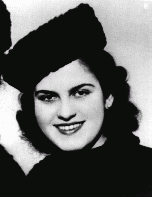
-
Dezider Gruenberger
ID CardDezider was the oldest of three children born to Hungarian-speaking Jewish parents in the city of Kosice in the southeastern part of Czechoslovakia known as Slovakia. As a young boy, he attended a Jewish elementary school. His father was a tailor whose workshop was in the Gruenberger's small apartment. 1933-39: After Dezider finished elementary school, he entered secondary school with a view to going on to the university. The language of instruction was Slovak, and Jews faced no discrimination until…
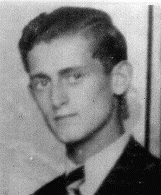
-
Frances Perkins
ArticleFrances Perkins was FDR's secretary of labor. Learn about her role in the rescue of European Jews whose lives were threatened by the Nazi regime.

-
Elie Wiesel: On the Atrocities in Sudan
ArticleTranscript of 2004 remarks delivered by Elie Wiesel, at a convening of the Darfur Emergency Summit, calling attention to atrocities in Sudan.
-
International Holocaust Remembrance Day
ArticleJanuary 27, anniversary of the liberation of Auschwitz, is designated by the United Nations General Assembly as International Holocaust Remembrance Day (IHRD).

-
Frank Liebermann
ArticleExplore Frank Liebermann’s biography and learn about his experiences of antisemitism in his home town in Germany before World War II.
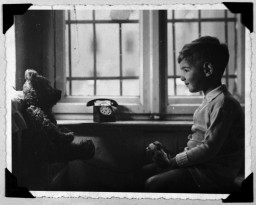
-
Ernest Hemingway - Photograph
Media EssayOn May 10, 1933, Nazi students at universities across Germany pillaged and burned books they claimed were “un-German.” Ernest Hemingway’s
-
Book Burning - Photograph
Media EssayOn May 10, 1933, Nazi students at universities across Germany pillaged and burned books they claimed were “un-German.” The targeted books were those they deemed contrary to Nazi goals and beliefs. The book burnings are an example of the regime's eff...
-
Book Burning (Abridged Article) - Photograph
Media EssayOn May 10, 1933, Nazi students at universities across Germany pillaged and burned books they claimed were “un-German.” The targeted books were those they deemed contrary to Nazi goals and beliefs. The book burnings are an example of the regime's eff...
-
Norwegian fascists
FilmThis German newsreel footage shows Vidkun Quisling, leader of the fascist Norwegian Nasjonal Samling party, reviewing his troops. Quisling headed a pro-Nazi puppet regime in Norway during the war.

-
Insignia of the 95th Infantry Division
PhotoInsignia of the 95th Infantry Division. The 95th Infantry Division, the "Victory" division, gained its nickname from the divisional insignia approved in 1942: the arabic numeral "9" combined with the roman numeral "V" to represent "95." The "V" led to the nickname, since the letter "V" was universally recognized as an Allied symbol for resistance and victory over the Axis during World War II.
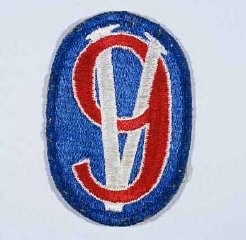
-
Ernest Hemingway
PhotoPortrait of Ernest Hemingway by Helen Pierce Breaker. Paris, France, ca. 1928. In 1933, Nazi students at more than 30 German universities pillaged libraries in search of books they considered to be "un-German." Among the literary and political writings they threw into the flames were the works of Ernest Hemingway.
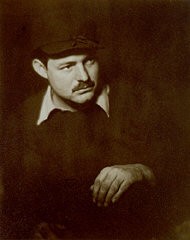
-
Hemingway on a safari
PhotoAmerican novelist Ernest Hemingway on safari, ca. 1933. In 1933, Nazi students at more than 30 German universities pillaged libraries in search of books they considered to be "un-German." Among the literary and political writings they threw into the flames were the works of Ernest Hemingway.

-
Ernest Hemingway
PhotoAuthor Ernest Hemingway aboard the boat Pilar, ca. 1950. In 1933, Nazi students at more than 30 German universities pillaged libraries in search of books they considered to be "un-German." Among the literary and political writings they threw into the flames were the works of Ernest Hemingway.
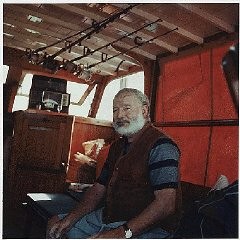
-
Students gather books for book burning
PhotoAcross Germany, students took books by truck, furniture van, even oxcart, and heaped them into pyres on public squares. This image shows members of the SA and students from the University of Frankfurt with oxen pulling manure carts loaded with books deemed "un-German." Frankfurt am Main, Germany, May 10, 1933.

-
Cover of a work by Sigmund Freud
PhotoSigmund Freud: Massenpsychologie und Ich-Analyse, cover. In 1933, Nazi students at more than 30 German universities pillaged libraries in search of books they considered to be "un-German." Among the literary and political writings they threw into the flames were all the works of Sigmund Freud that were published by 1933.
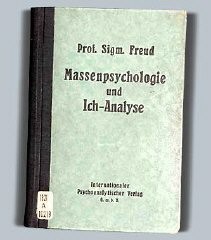
-
Ernst Toller
ArticleErnst Toller was one of the best-known German dramatists of the 1920s. He wrote against Nazism, and was among those whose works were burned under the Nazi regime.
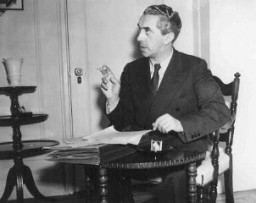
-
The White Rose Opposition Movement
ArticleThe White Rose, led by students including Hans and Sophie Scholl, was an anti-Nazi group during WWII. Its members spread leaflets denouncing the regime.
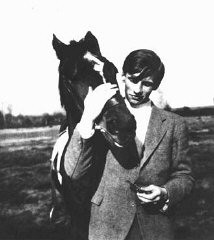
-
Artist on the Blacklist: Ludwig Meidner
ArticleLudwig Meidner was an Expressionist artist and poet. He was on the list of banned writers and artists in Nazi Germany. Monographs about him were burned in 1933.
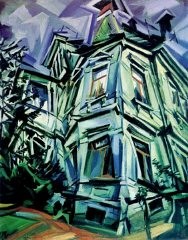
-
Bertolt Brecht
ArticleBertolt Brecht was a leading German dramatist, well known for his political films and plays. His works were burned during the Nazi book burnings of 1933. Learn more.

-
Alfred Kerr
ArticleGerman Jewish writer Alfred Kerr was a well known theater critic during the Weimar period. His works were burned during the Nazi book burnings of 1933.
-
Helen Keller
ArticleHelen Keller was an author, suffragist, and disability rights advocate. Her socialist and anti-war writing was burned under the Nazi regime in 1933. Learn more.
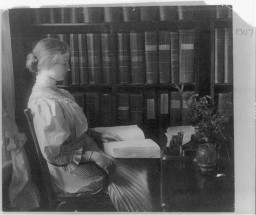
-
Georg Bernhard
ArticleGeorg Bernhard was a prominent financial columnist. The Nazis declared that German journalism must be "cleansed" of Jews. Bernhard’s work was burned in 1933.
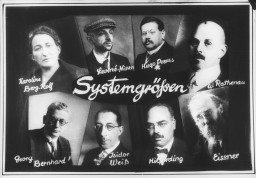
-
Georg Grosz
ArticleGeorg Grosz was a German artist of the Dada movement. His books, which had many of his best-known plates, were burned in Nazi Germany in 1933. Learn more.

-
Heinrich Mann
ArticleHeinrich Mann was an author and early target of the Nazis for his political views. His writings were among those burned under the Nazi regime in 1933. Learn more.
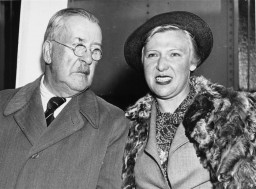
-
Sholem Asch
ArticleSholem Asch was a Yiddish dramatist and novelist. He depicted small town Jewish life and socialist themes. His work was burned in Nazi Germany in 1933.

-
Richard Nikolaus Coudenhove-Kalergi
ArticleCount Richard Nikolaus Coudenhove-Kalergi founded the "Pan-Europe" movement. His works were tossed into the flames during the Nazi book burnings of 1933.
-
Henri Barbusse
ArticleHenri Barbusse was a French author who wrote pacifist and socialist works. In 1933, his writings were burned under the Nazi regime. Learn more.
-
Vicki Baum
ArticleVicki Baum was a bestselling author who embraced the ideals of liberation for women. Her works were burned during the Nazi book burnings of 1933. Learn more.
-
Friedrich Wilhelm Förster
ArticleFriedrich Wilhelm Förster was an author, educator, and philosopher. In 1933, his works were denounced as subversive and burned in Nazi Germany. Learn more.
-
Rudolf Hilferding
ArticleRudolf Hilferding was a well-known socialist. Also Jewish, he was persecuted by the Nazis and later died in prison. His books were burned in Germany in 1933.

-
Morris Hillquit
ArticleMorris Hillquit was a prominent theoretician of the socialist movement in the United States. His work was burned in the Nazi book burnings of 1933. Learn more.
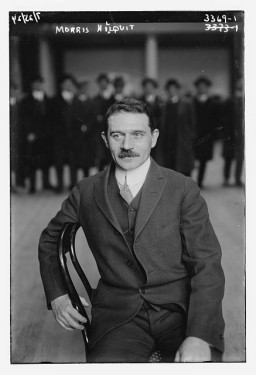
-
Erich Kästner
ArticleErich Kästner was a popular political satirist and left-liberal author whose works were burned under the Nazi regime in 1933. Learn more.
-
Vladimir Lenin
ArticleVladimir Lenin was the leader of the new Soviet government after the Russian Revolution of 1917. His works were burned in Nazi Germany in 1933. Learn more.
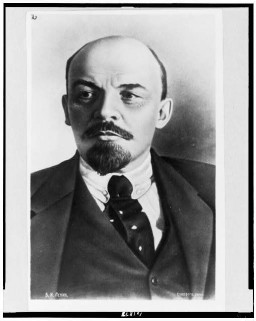
-
Arnold Zweig
ArticleArnold Zweig was a German novelist and playwright. The Nazis denounced him as a pacifist, and his works were burned in 1933. Learn more.
-
Theodor Wolff
ArticleTheodor Wolff was an influential German journalist and vocal opponent of the Nazis. His work was burned during the Nazi book burnings of 1933. Learn more.
-
Jakob Wassermann
ArticleJakob Wassermann was a popular German Jewish author. After the Nazi rise to power, he was forced to leave Germany. His works were burned in May 1933. Learn more.
-
Kurt Tucholsky
ArticleKurt Tucholsky was a German satirist who criticized the Nazis during their rise to power. In 1933, his works were burned under the Nazi regime. Learn more.
-
Josef Stalin
ArticleJosef Stalin was the General Secretary of the Soviet Communist Party and the head of the Soviet state. His works were burned in Nazi Germany in 1933. Learn more.
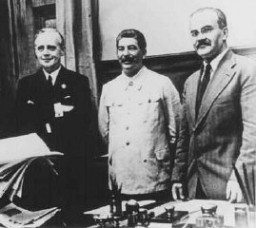
-
Kurt Pinthus
ArticleKurt Pinthus was a German Jewish journalist and critic connected to the Expressionistic movement. His works were burned in Nazi Germany in 1933. Learn more.
-
Carl von Ossietzky
ArticleCarl von Ossietzky was a German journalist, pacifist, and Nobel Peace Prize laureate whose articles were burned under the Nazi regime in 1933. Learn more.
-
Klaus Mann
ArticleKlaus Mann was a German author whose novel “Mephisto” exposed the evil of the Nazi dictatorship. His works were burned in Nazi Germany in May 1933. Learn more.
-
Bad Gastein Displaced Persons Camps
ArticleAfter WWII, many Holocaust survivors, unable to return to their homes, lived in displaced persons camps in Germany, Austria, and Italy. Read about Bad Gastein DP camp.
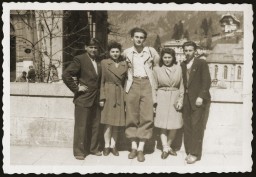
-
H.G. Wells
ArticleH.G. Wells was an author best known for science fiction titles. The Nazis objected to "The Outline of History," a non-fiction work, which was burned in 1933.
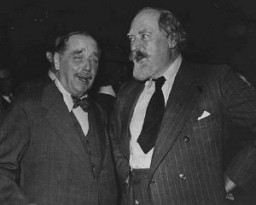
-
John Dos Passos
ArticleJohn Dos Passos was an American author who served in World War I. During the Nazi book burnings of 1933, his works were burned for their leftist leanings.
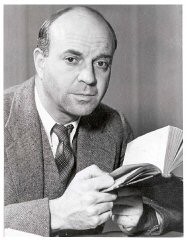
-
Rosa Luxemburg
ArticleRosa Luxemburg was a Marxist and a leader of the radical wing of the German Social Democratic Party. Her work was burned in Nazi Germany in 1933. Learn more.
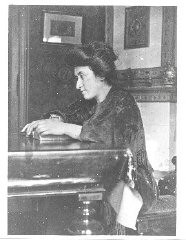
-
Sigmund Freud
ArticleSigmund Freud was the founder of psychoanalysis. The Nazis abhorred his new science and Jewish heritage. His works were burned in Germany in 1933. Learn more.
